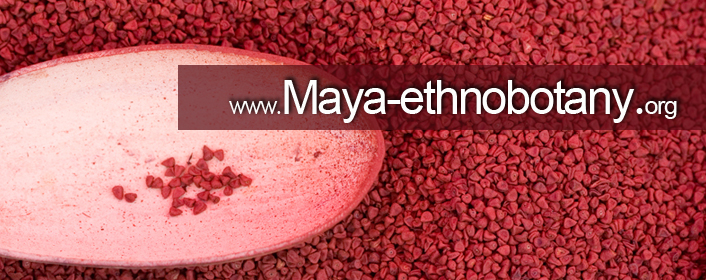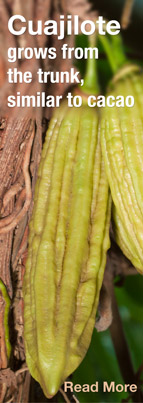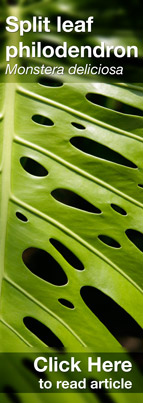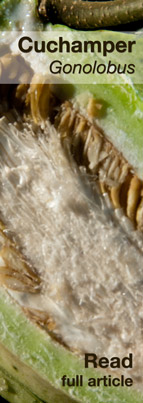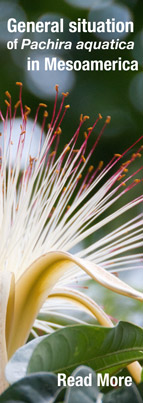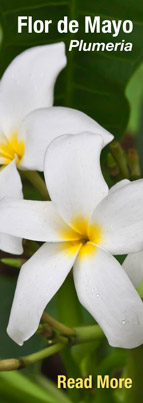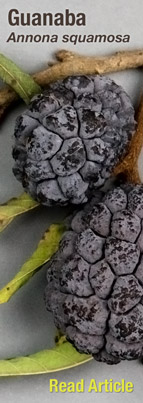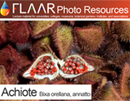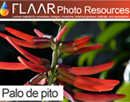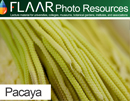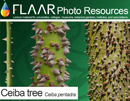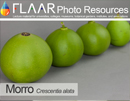When time and funding permit, each flower (each plant species) will have its own page, and its own PDF, and eventually its own PPT so that professors and students have plenty of material on Guatemala (and Honduras, etc) to study.
Heliconia adflexa, Coban, Guatemala, Hotel Monja Blanca, FLAAR, by Nicholas Hellmuth
This space is for flowers
we have recently found and photographed.
|
| Share
|
| Be careful of hallucinogenic mild-altering plants as they tend to be poisonous; the case of angel’s trumpet, Brugmansia arborea. |
|
Brugmansia arborea is a popular garden flower throughout the tropics We found this plant in our garden. We also see yellow Brugmansia in nurseries. These are popular garden flowers throughout tropical America. They require no particular care and grow like a contented weed. Then occasionally they begin to flower and you have gorgeous flowers for many days (my shrub is not that large). When I returned from lecturing in South Africa and installing my photo exhibit in St Louis at MOBOT on sacred Maya flowers, I found the plant flowering. There were about eight dead flowers already on the ground; three flowers in full bloom, and about nine buds. 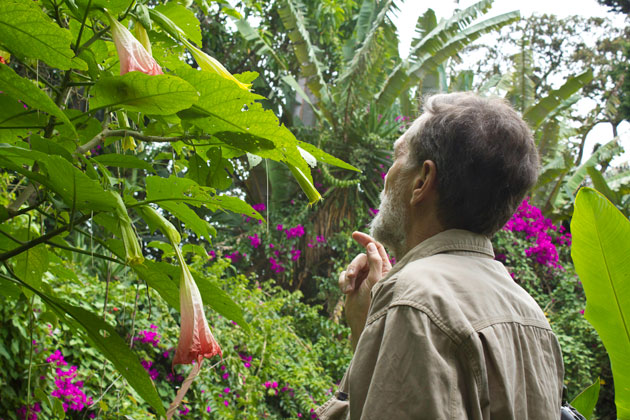 This is the height of the autumn rainy season, at 1500 meters elevation, Guatemala City. One part of the tree actually had fallen to the ground and was almost like a ground vine. Part in the middle had taken root. But it was still producing flowers at the end. The rest of the shrub was upright. We noticed no fragrance whatsoever with the flowers of Brugmansia arborea Unless you stick your nose deep into the flower, during the day there was no odor. And at night I did not notice much either. In distinction, huele de noche and flor de nardo have a delectable fragrance. These other two flowers are noticeable to your nose many meters away. But, when I went to the plant about 9 pm, and cut one of the flowers to bring it into the photo studio, I noticed it did indeed offer a remarkable fragrance, like sweet enticing flavored milk. Not the overpowering fragrance of huele de noche or flor de nardo. And not the amazing fragrance of the Brugmansia tree in the nursery in Antigua Guatemala (which has over 70 flowers at a time). But the pink flower did have a potentially alluring odor. Since the plant is toxic, hallucinogenic and probably even more nasty features I did not want to inhale any more. But I can understand that if you were the High Priest, or Shaman or King, you might want to stick your face into the flower for several minutes. 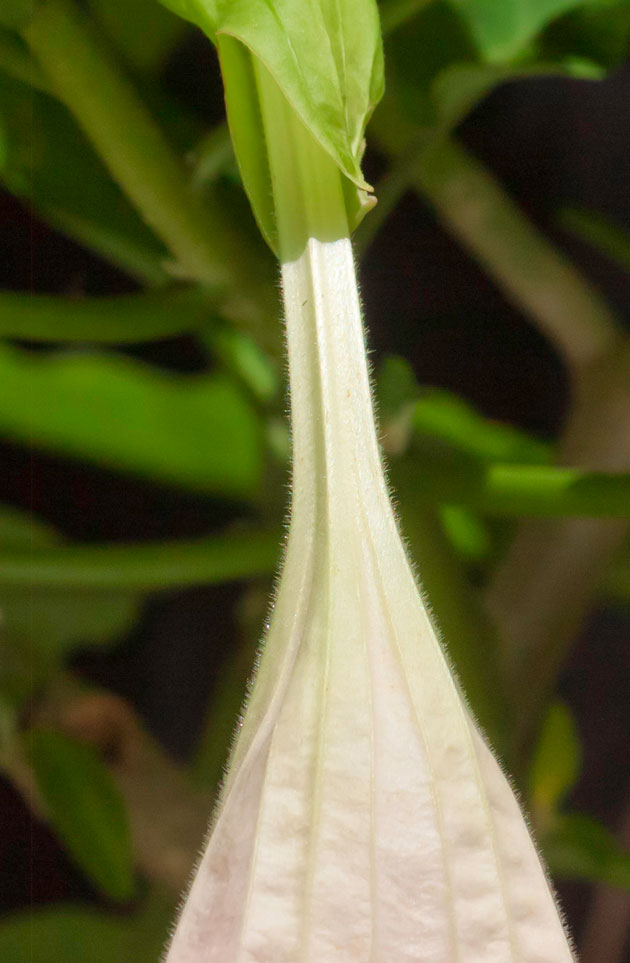 Imagine if you had a dozen other flowers available with additional chemicals. Fortunately I prefer to photograph the natural beauty of these flowers. I find life quite educational, learning about plants and animals, so I do not feel the need to destroy my brain and damage the remains of my body just to get a momentary high. Flowers pop open in the early evening Two of the blossoms opened before 7:30 pm. Whether they open only at night is hard to tell since our shrub is not that large. We photographed theBrugmansia flower outside, and then in our studio About 20 minutes after the half-opened bud was in our studio, it suddenly popped fully open. This amazed the photographer, Sofia Monzon. 
The different stages of the Florifundia as it opened during the photo shoot in our studio. Images by Sofia Monzon using a Canon EOS Rebel T2i We use fluorescent lighting courtesy of F.J. Westcott, so there is no heat to melt the poor flowers. We put them in lots of water. So a combination of the water and the light probably caused the flower to open. Later I brought in two buds, and neither of them opened even after being under light for three hours. I guess they were not yet open enough to be triggered by the fluorescent lighting. 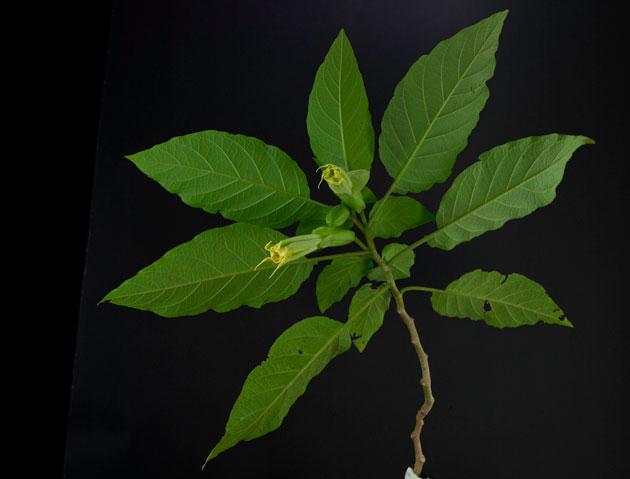
These two angel trumpet buds did not open under the light. Burgmansia arborea, florifundia image taken in FLAAR Studio by Nicholas Hellmuth using a Phase One A/S P25+ Buds of Brugmansia arborea are yellow; flower is initially white; when mature flower is pink At first I thought the tree was producing several different colors of flowers. But later we figured out that
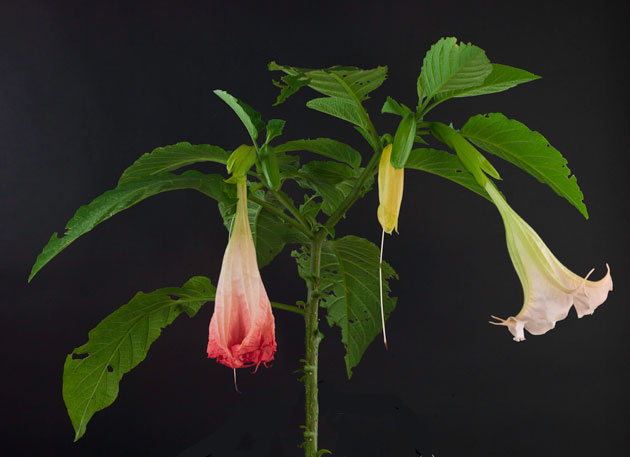
Angel trumpet flowers in different stages. FLAAR Studio, photo by Nicholas Hellmuth using a Phase One A/S P25+ Brugmansia arborea is native to South America so Mesoamerican usage needs to be confirmed Brugmansia arborea is considered to be from South America, so whether it was grown in Mesoamerica before arrival of the Spaniards needs to be confirmed. I would estimate that a flower as pretty as this for a garden, and a plant with as many hallucinogenic chemicals would have been desired two thousand years ago. But before we all start talking about the Maya using this plant, we need proof that it is pre-Columbian in Mesoamerica. Most identifications of flowers in Maya art are in error If you see anyone calling a flower in Maya art a Datura, you have to ask whether they are familiar with the newest botanical awareness of the Solanaceae, nightshade, family. Datura have flowers pointing up; Brugmansia have flowers pointing down. Both kinds of plant deserve further study to see which was available to the pre-Columbian Maya of Guatemala and nearby areas. 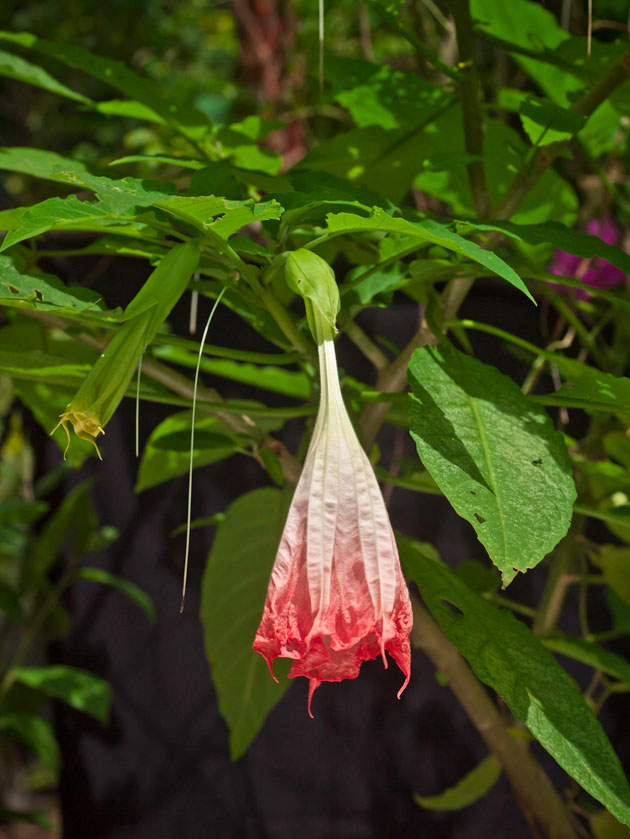
Brugmansia have flowers pointing down. Photo by Nicholas Hellmuth using a Phase One A/S P25+ We are not studying hallucinogens. But if you wish to learn which plants to avoid, the monographs by Christian Ratsch are the best. You can also look at the book by Michael Wink and Ben-Erik Van Wyk. Our interest is to see which plants were used by the Maya; which not. And which flowers appear in Maya art. After several years of research we have noticed that most and often all identifications of flowers in Maya art are inaccurate. The exception are identifications by botanist Charles Zidar, Missouri Botanical Garden. Ratsch is pretty accurate also. 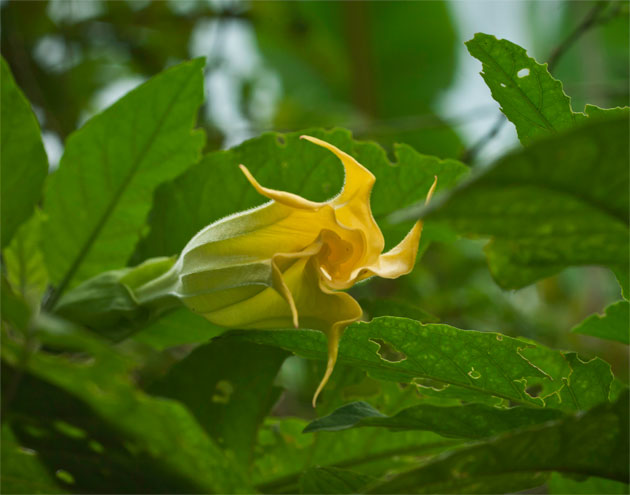
Brugmansia arborea is rarely correctly identified as such.. Photo by Nicholas Hellmuth using a Phase One A/S P25+ Probably 60% to often 90% of the identifications of flowers in books by most writers on the Lacandon Maya of Lowland Chiapas are in error (they all focus too much on Plumeria). The sad fact is that many of the ethnographers who have lived and worked with the Lacandon have seemingly never gone out and actually studied each and every flower. Their names for most of the Lacandon flowers-of-deity-generation are incorrect. There are potentially three species involved; so far more than only Plumeria. We have high resolution photographs of all three flowers. The Brugmansia arborea is not mentioned in most studies of the Lacandon and rarely featured in most research on the Maya use of flowers (the flowers which are important tend to be given other names, which we have indicated are mostly incorrect). I mention the error on the Lacandon plant names because there is a comparable mish mash of illogical naming between Datura and Brugmansia. Most parts of this Brugmansia arborea plant are toxic 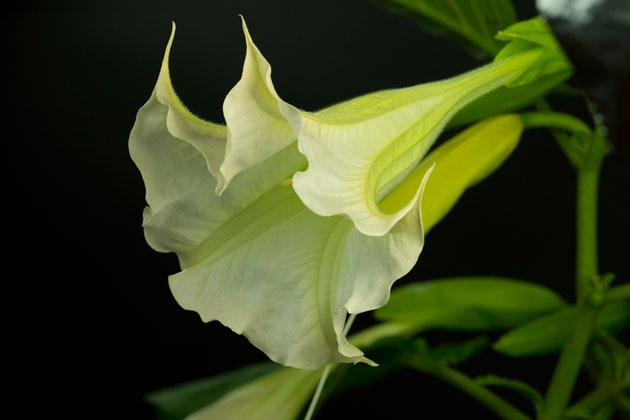
Florifundia is a toxic plant. Brugmansia arborea flower, image by Sofia Monzon using a Canon EOS Rebel T2i Do not touch the plant without gloves; wash your hands afterwards, and resist any silly temptation to eat any part of the plant. This plant, and its relatives, are toxic. You see more Brugmansia in Guatemala than Datura Most of the trumpet-shaped flowers you see in gardens as you drive through villages throughout Guatemala have flowers that are hanging down. Most of these are Brugmansia. So I do not see Datura as often.
First posted September 11, 2012. More text added September 12, 2012. |
Parque Nacional Yaxha, Nakum and Naranjo
Carnivorous Plants
Plants of Municipio de Livingston, Izabal
- Acrostichum danaeifolium, giant leather ferns
- Bellucia Pentamera
- Bibliography on Grias cauliflora
- Bibliography on Licania platypus
- Bibliography on Mangle negro (Avicennia germinans) L.
- Bibliography on Montriacardia arborescens
- Bibliography on Typha domingensis and Thypha latifolia
- Conocarpus erectus, white mangrove
- Edible Wetlands Plants, Hotel Tortugal
- Heliconia latispatha
- Heliconia wagneriana
- Manicaria saccifera Confra palm
- Neotropical trees of Guatemala need protection
- Nymphoides indica, waterlily flowers
- Pachira aquatica, zapoton
- Bibliography on Pithecellobium Mart., Neotropical trees of Mesoamerica
Ecosystems, Wetlands Aquatic Plants
Smartphone Camera Reviews
Bushes and small trees
Fungi and Lichens
Orchids
- Bibliography Bletia purpurea, aquatic orchid
- Bibliography, Epidendrum radicans
- Bibliography on Habenaria Orchids from Yaxha
- Bibliography, Lycaste virginalis var. alba.
- Bibliography, Macroclinium bicolor
- Bibliography, Prosthechea cochleata
- Bibliography Sobralia macrantha, Lirio de San Juan
- Bibliography, Sobralia xantholeuca
- Bibliography on Terrestrial shade orchids from Guatemala
- Bibliography on Terrestrial sunny orchids from Guatemala
Botanical Terms
Maya and Aztec flavorings for cacao, cocoa, chocolate
- Achiote, Bixa orellana
- Bibliography on Achiote, Bixa orellana
- Bibliography on Esquisúchil, Bourreria huanita
- Bourreria huanita
- Cassia grandis, bucut
- Chile Chocolate
- Chile Chocolate (Capsicum annuum var accuminatum)
- Chiranthodendron pentadactylon
- Cymbopetalum penduliflorum
- Guazuma ulmifolia
- Haematoxylum brasiletto
- Piper auritum, hoja santa
- Piper species
- Quararibea funebris
- Sterculia apetala, castaño
- Tagetes sp., Marigold
- Talauma, a variant of Magnolia
- Vanilla orchid
- Virola and nutmeg
Cacao, cocoa, chocolate
Consulting cacao & Theobroma species
Tobacco Ingredients of Aztec & Maya
Trees of Mesoamerica
- Bibliography on Acacia dolichostachya, Wild tamarind
- Bibliography, Bellucia costaricensis
- Bibliography, Bucida buceras
- Bibliography on Coccoloba belizensis Standl.
- Bibliography on Cojoba sp. and Cojoba arborea
- Bibliography, Ficus.
- Bibliography on Haematoxylum campechianum and H. brasiletto
- Bibliography on Hibiscus pernambucensis
- Bibliography on Ipomea murucoides
- Bibliography on Lacmellea standleyi, lechemiel
- Bibliography on Leucaena leucocephala
- Bibliography on mangle rojo (Rhizophora mangle)
- Bibliography on Manzanillo, Alseis yucatanensis Standl.
- Bibliography on Matilisguate, Tabebuia rosea
- Mangrove swamp Trees
- Bibliography on Ruagea insignis
- Bibliography on Pterocarpus officinalis
Bombacaceae, Bombacoideae
Tropical Fruits of the Maya
- Avocado Hass
- Bibliography on Coloc, Talisia floresii
- Bibliography, Dichogamy of avocado species
- Bibliography on Guayo, Talisia olivaeformis
- Bibliography on Laetia thamnia, Bakelac
- Bibliography on Maracuyá, Passiflora quadrangularis L.
- Bibliography on Punica granatum L., Granada
- Cashew
- Cuajilote, Parmentiera aculeata
- Granada
- Guanabas and Annonas
- Guava, Guayaba, Psidium guajava L
- Introduction to Papaya
- Nance a fruit of prehispanic Guatemala
- Passion flowers and fruits
- Passion flower, giant fruit
- Talisia floresii, Sapindaceae
- Carica Papaya Bibliography
Tropical Nuts
Spices, condiments, food coloring
Medicinal Plants
- Aristolochia, The largest flower in Guatemala, Bibliography
- Asclepias curassavica, bibliography
- Bibliography on Ciricote, Cordia dodecandra
- Bibliography on Contrahierba, Dorstenia contrajerva
- Bibliography on Falso hibisco, Malvaviscus arboreus
- Bibliography on Huele de noche, Cestrum nocturnum
- Bibliography on Lirio araña, Hymenocallis littoralis
- Bibliography on Roble Prieto, Ehretia tinifolia
- Bibliography, Tithonia diversifolia
- Canak
- Calliandra general info
- Guava, Guayaba
- Magnolia and Taluma
- Mayan medicinal plants
- Piper
- Tecomasuche, Coclospermum vitifolium
- Bibliography on Sufricay, Malmea depressa
- Bibliography on Wigandia urens
Underutilized edible plants
Edible Plants of the Mayan World
- Acacia, subin, bullhorn acacia
- Bibliography, Annona muricata
- Bibliography, Annona purpurea
- Bibliography, Annona reticulata
- Bibliography on Chipilín, Crotalaria longirostrata
- Bibliography on Chirimoya, Annona squamosa
- Bernoullia flammea
- Canna indica, tamale wrap
- Cuchamper, Gonolobus
- Guava, Guayaba
- Bibliography, Gonobolus sp.
- Bibliography, Parmentiera aculeata
- Pacaya palm Chamaedorea tepejilote
- Split leaf philodendron, Monstera deliciosa
Plants and trees used to produce incense
Utilitarian Plants
- Bibliography, Acacia farnesiana
- Bibliography on Aechmea bromeliifolia
- Bibliography on Agave americana
- Bibliography, native Agave species from Guatemala
- Bibliography on Anthurium crassinervium (Jacq.) Schott
- Bibliography on Balsa, Ochroma pyramidale
- Bibliography on Bamboo, Guadua longifolia (E.Fourn) R.W.Pohl
- Bibliography, Crescentia alata
- Bibliography, Crescentia cujete
- Bibliography on Hule, Castilla elastica
- Blepharidium guatemalense, irayol blanco
- Crescentia alata, Crescentia cujete
- Tecomasuche, Coclospermum vitifolium
- Bibliography on Coxte, Colubrina arborescens
- Bibliography on Madre cacao, Gliricidia sepium
- Bibliography on Tillandsia usneoides
